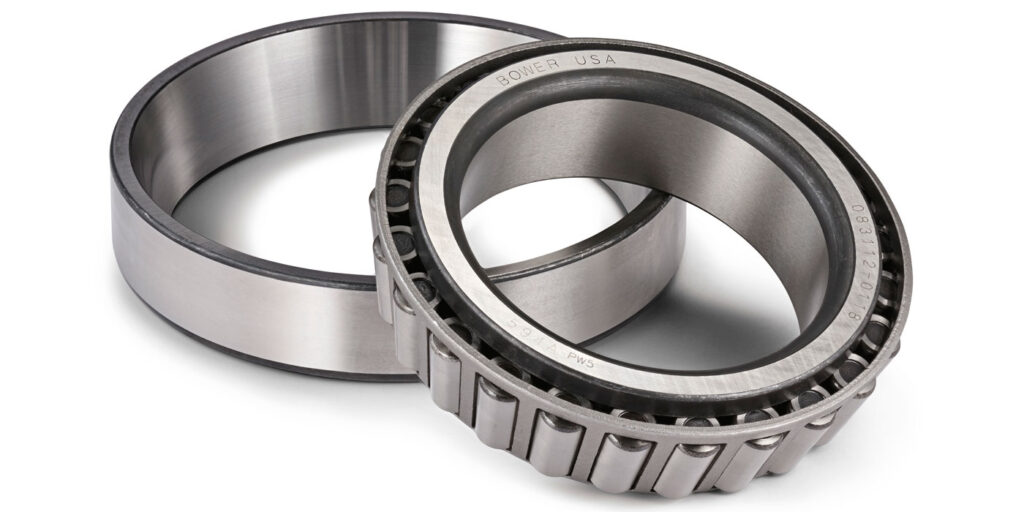Wheel ends are an important component of your trucks, but preferably one you’d rather not think about too much. In an ideal world, the wheel end will be a steady component that keeps doing its job, keeping your trucks rolling and your loads moving.
For that to be the case, it’s important for wheel ends and bearings to be durable.
These are the components of a typical wheel hub cross section:
- Inner Bearing: This is the bearing set closest to the engine, and is generally the larger bearing.
- Outer Bearing: This smaller bearing set is closest to the end of the spindle.
- Locknut: This is used to hold assembly together and set the bearing clearance.
- Wheel seal (or oil seal): This is mounted on the inboard side.
- ABS Ring: An optional component that may be mounted on the inboard side of the hub.
So what can you do to make sure all of these components keep working together the way they should? You can start by spec’ing wheel ends built for long life.
For example, all bearings that Bower by NTN produces undergo a heat treatment called case carburization.
In general, there are two types of steel grades: through hardened and case hardened.
Through hardened grades are high carbon steels and can attain greater hardness and are more consistently hard throughout the cross section of the steel.
The downside of this process: through-hardened steel components are relatively brittle and can fracture under impact or shock loads.
Case carburization, on the other hand, is an alternate heat treating process during which carbon is added to low-carbon steels, which creates a hard steel case on the rolling surfaces, leaving the inner core softer than it would be in the through hardening process. The tough outer shell helps protect the rolling elements from damage, while the ductile core acts like a shock absorber and takes the brunt of the road’s impact, preventing catastrophic failure. This creates significantly increased durability and extended bearing life.
Through testing, Bower has found that advantages of this process include: superior crack and fracture resistance under shock loads; 40% longer life than through-hardened steel; and the fact that the core is advantageous under misalignment conditions.
“Case carburization is the superior hardening process for heavy-duty wheel bearing applications,” said Divjot Singh, Application Engineer at NTN. “Through hardening is a faster process and takes less precision, thus making it a less expensive and easier process to perform. When we talk about safety and reliability, two of the most important things fleets look for in a wheel bearing, it is never worth cutting corners on a lower cost, through hardened alternatives.”
The case, if you’ll pardon the pun, is clear in favor of case carburizing. Fleets need to take any avenue they can toward longer life and reduced maintenance costs for their parts and components, and this is one they should not pass up.
This article was sponsored by Bower Heavy Duty Bearings by NTN. For more than 100 years, Bower heavy duty bearings have earned a reputation for reliability and performance in the no-nonsense world of big rigs and other hard-working vehicles. Learn more about Bower at PowerofBower.com.














